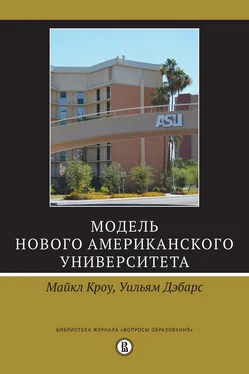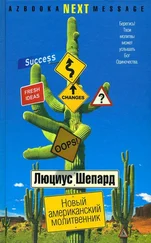Jaimovich N., Siu Н.Е. The Trend Is the Cycle: Job Polarization and Jobless Recoveries: NBER Working Paper No. 18334. 2012. August. P. 2, 7–9. .
Autor D.H. The Polarization of Job Opportunities in the U.S. Labor Market: Implications for Employment and Earnings. Washington, DC: Center for American Progress, 2010. P. 9. См. также: Autor D.H ., Katz L.F., Kearney M.S. The Polarization of the Labor Market // American Economic Review. 2006. Vol.96. No. 2. P. 189–194.
Stiglitz J.E. Price of Inequality… P. 9.
DeNavas-Walt С., Proctor B.D., Smith J.C. U.S. Census Bureau, Current Population Reports, P60-243, Income, Poverty, and Health Insurance Coverage in the United States: 2011. Washington, DC: U.S. Government Printing Office, 2012; цит. no: Rampell C. Behind the Decline in Incomes // New York Times. 2012. September 12. .
В первую очередь см. отчет Центра Пью по штатам: Pew Center for the States / Pursuing the American Dream: Economic Mobility across Generations. Washington, DC: Economic Mobility Project, Pew Charitable Trusts. 2012.
Baum S., Ma J., Payea K. Education Pays, 2013: The Benefits of Higher Education for Individuals and Society. N.Y.: College Board. 2013. 34. Приводимые числа относятся к зачислениям в вузы всех институциональных типов, включая муниципальные колледжи двухгодичного цикла.
Bowen Е.М., Kurzweil М.А., Tobin W.G. Equity and Excellence in American Higher Education. P. 98–99. Fig. 5.2.
Mettler S. College, the Great Unleveler // New York Times. 2014. March 1.
Mortenson T.G. Bachelor’s Degree Attainment by Age 24 by Family Income Quartiles, 1970–2010. Oskaloosa, IA: Pell Institute for the Study of Opportunity in Higher Education, 2010.
Bailey M.J., Dynarski S.M. Gains and Gaps: Changing Inequality in U.S. College Entry and Completion: NBER Working Paper No. 17633. 2011. P. 4–5. .
Pursuing the American Dream. Economic Mobility Across Generations / The Pew Charitable Trusts. 2012. P. 2. .
Isaacs J.B. Economic Mobility of Families across Generations // Getting Ahead or Losing Ground: Economic Mobility in America / ed. by J.B. Isaacs, I.V. Sawhill, R. Haskins. Washington, DC: Brookings Institution, 2012. P. 19. По их данным, среди выходцев из низшего доходного квинтиля 42 % так и остаются внизу, еще 42 % попадают лишь во второй или третий квинтили. «Лишь 17 % выходцев из низшего квинтиля удается перебраться в два верхних квинтиля». При этом среди детей, чьи родители достигли высшего квинтиля, 39 % остаются наверху, а 23 % сползают в более нижний квинтиль.
Economics of Higher Education / U.S. Departments of Treasury and Education. P. 15–16. Fig. 6.
Urahn S.K. et al. Pursuing the American Dream: Economic Mobility across Generations. Washington, DC: Pew Charitable Trusts, 2012. P. 25.
Isaacs J.B. Economic Mobility of Families… P. 19.
Карневале А.; цит. no: Edsall T.B. The Reproduction of Privilege // New York Times. 2012. March 12.
Carnevale A.P., Strohl J. How Increasing College Access Is Increasing Inequality… P.71.
Brooks D. The Education Gap // New York Times. 2005. September 25.
Ibid.; Reardon S.F. The Widening Academic Achievement Gap between the Rich and the Poor: New Evidence and Possible Explanations // Whither Opportunity? Rising Inequality, Schools, and Children’s Life Chances / ed. by G.J. Duncan, R.J. Murname. N.Y.: Russell Sage Foundation, 2011. P. 4–5.
Edsall Th. E. Reproduction of Privilege…//New York Times. 2012. March 12.
Leonhardt D. Top Colleges Largely for the Elite I I New York Times. 2011. May 24. Приведенные данные относятся к осени 2003 г.
Dreier R, Kahlenberg R.D. Making Top Colleges Less Aristocratic and More Meritocratic // New York Times. 2014. September 12.
Florida R. The Rise of the Creative Class: And How It Is Transforming Work, Leisure, Community, and Everyday Life. N.Y.: Basic Books, 2002 (рус. nep.: Флорида P. Креативный класс: люди, которые меняют будущее. М.: Классика-XXI, 2005).
Piketty Т. Capital in the Twenty First Century. Cambridge, MA: Harvard University Press, 2014. P. 22, 71.
Mettler S. Degrees of Inequality: How the Politics of Higher Education Sabotaged the American Dream. N.Y.: Basic Books, 2014. P. 5.
Goldin C., Katz L.F. Race between Education and Technology… P. 22.
Turner В . Going to College… P. 13–16; Carnevale A.P., Strohl J. How Increasing College Access Is Increasing Inequality… P. 73.
Hacker A. Is Algebra Necessary?//NewYork Times. 2012. July 28; Chapman С., Laird J., Ifill N. et al. Trends in High School Dropout and Completion Rates in the United States: 1972–2009 / U.S. Department of Education, NCES 2012-006. Washington, DC: National Center for Education Statistics, 2011. P.50. Table 12.
Swanson C.B. Closing the Graduation Gap: Educational and Economic Conditions in America’s Largest Cities. Bethesda, MD: Editorial Projects in Education, 2009.
Greene J.P., Forster G. Public High School Graduation and College Readiness Rates in the United States: Education Working Paper No. 3. Center for Civic Innovation, Manhattan Institute. September 2003. По данным этого отчета, в 2001 г. лишь 20 % темнокожих студентов и 16 % студентов латиноамериканского происхождения были в достаточной мере подготовлены к поступлению в колледж.
Hoxby С.М., Avery С. The Missing ‘One-Offs’: The Hidden Supply of High-Achieving, Low-Income Students: NBER Working Paper No. 18586. 2012. .
Rising above the Gathering Storm Revisited… P. 49–50.
Анализ данных по ОЭСР за 2009 г., выполненный экспертами Брукингского института; цит. по: Rothwell J. et al. Patenting Prosperity: Invention and Economic Performance in the United States and Its Metropolitan Areas. Washington, DC: Brookings Institution, 2013. P. 32. Table 16.
Читать дальше
Конец ознакомительного отрывка
Купить книгу










